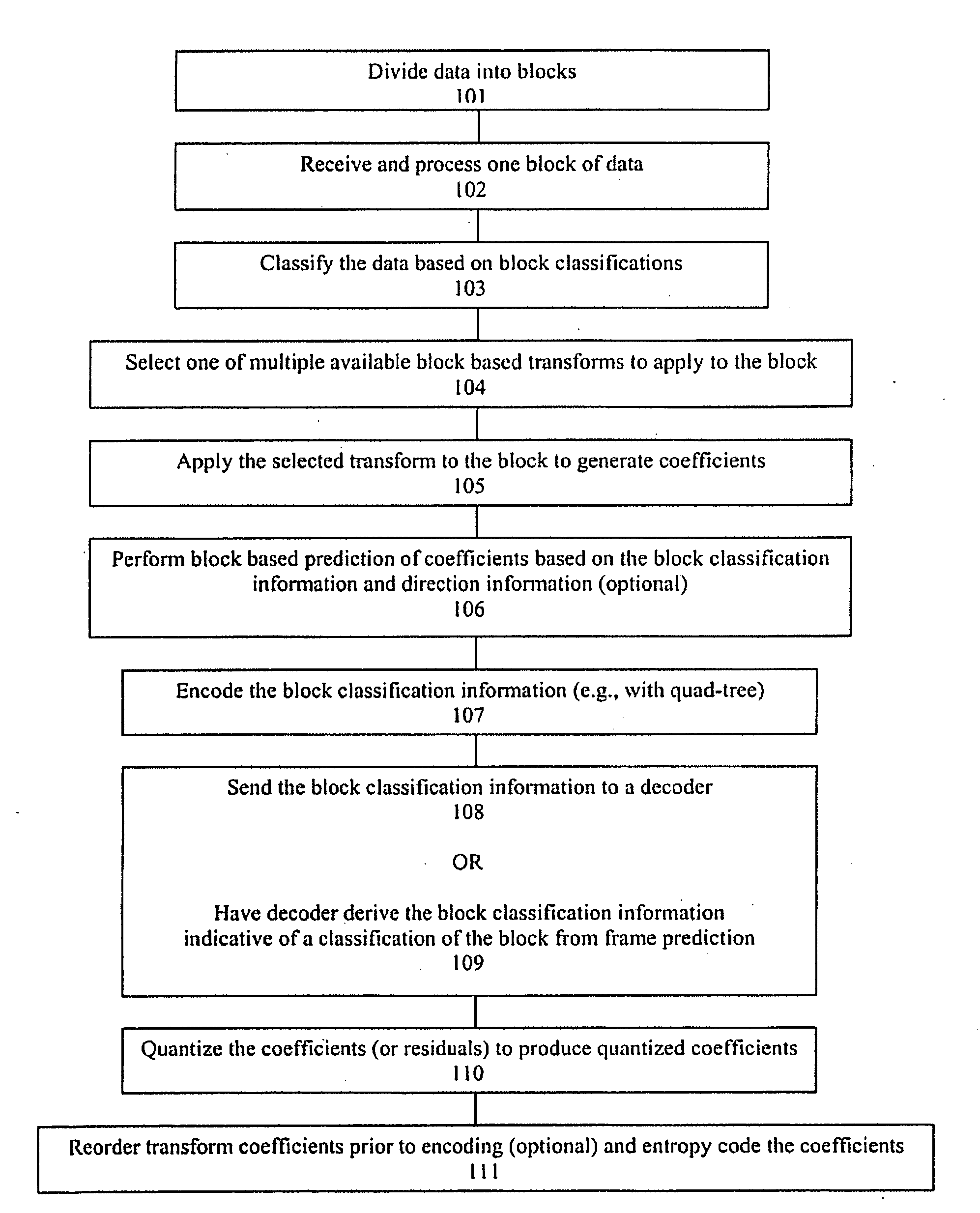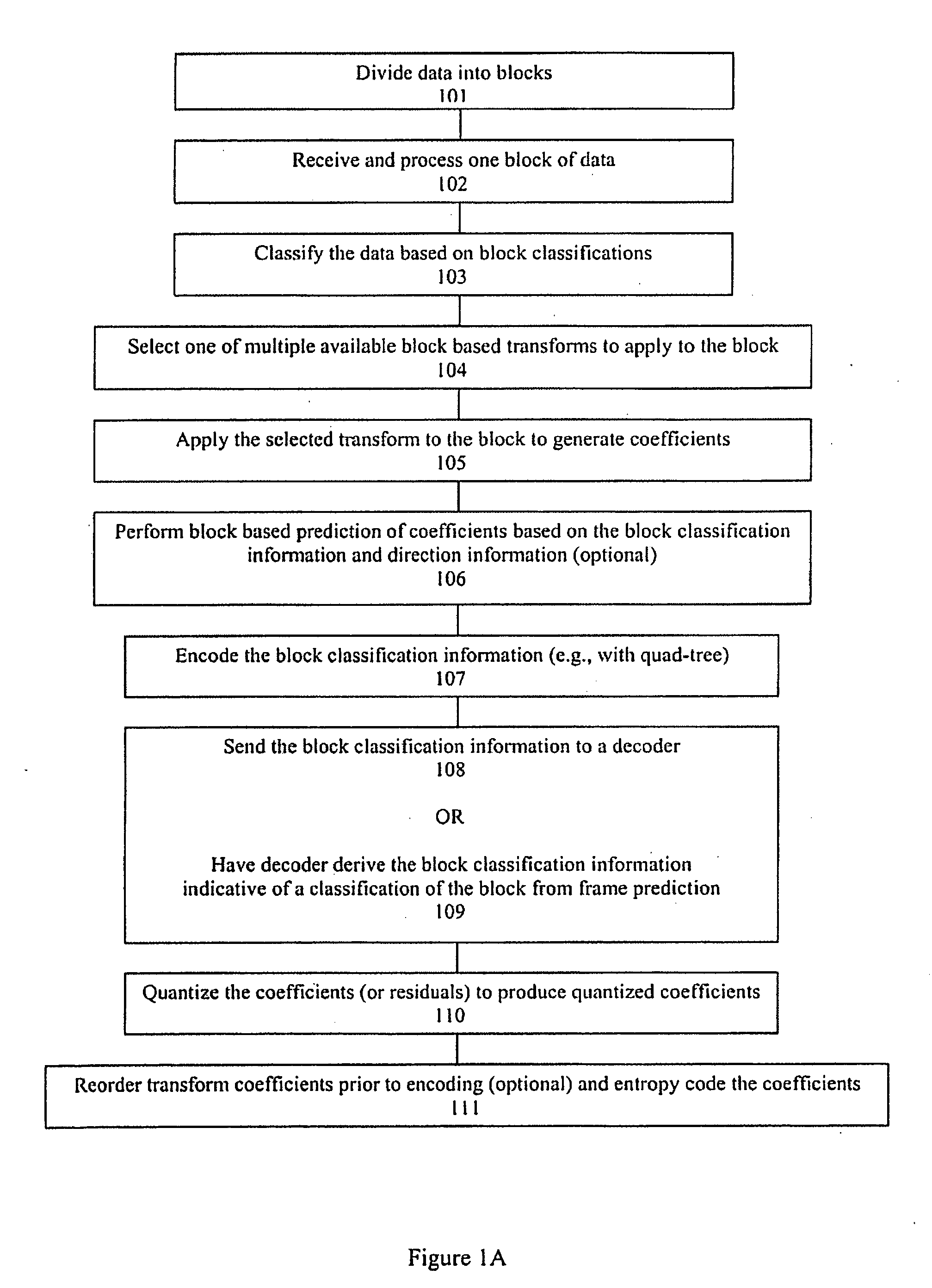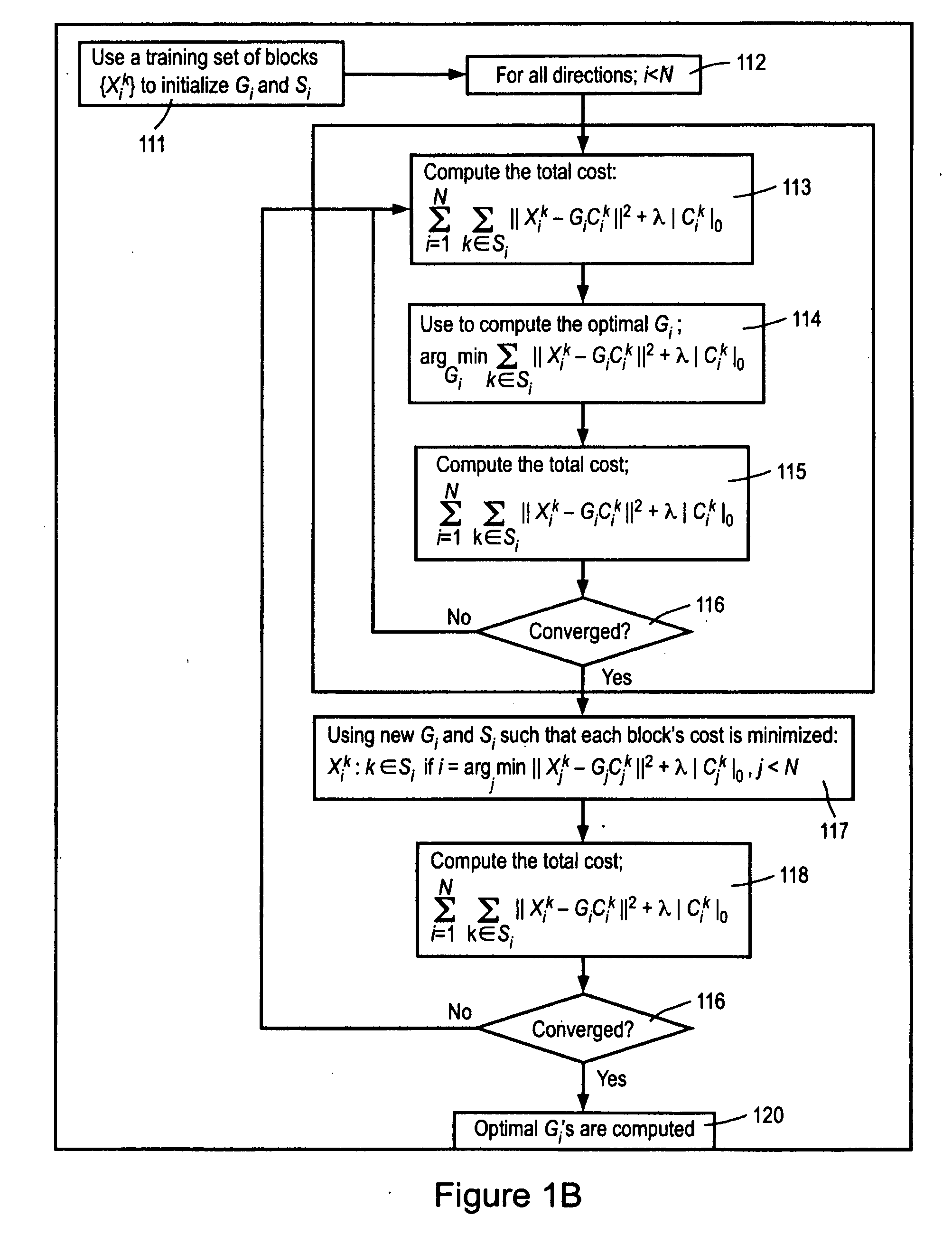Image and video compression using sparse orthonormal transforms
a technology of orthonormal transformation and image, applied in the field of image and video compression/decompression systems, can solve the problems of increasing the required bitrate, not suitable for use in state-of-the-art block-based video and image codecs, and not providing fine granular decomposition in frequency
- Summary
- Abstract
- Description
- Claims
- Application Information
AI Technical Summary
Problems solved by technology
Method used
Image
Examples
Embodiment Construction
[0022]Improved block transforms for use in compression applications is described. Techniques described herein rely on classification of blocks and in one embodiment use an optimal transform designed for the corresponding class. In one embodiment, the block classification and transform optimization are performed jointly using a set of training blocks.
[0023]In one embodiment, the presented techniques automatically derive the optimal classification. For piecewise smooth images with singularities along curves, one such classification is based on geometric flow, which exploits the correlations along the singularities of an image. Traditional transforms fail along such singularities due to their geometry-unaware design.
[0024]In a compression framework, the generated optimal transforms can be considered as alternatives to the well-known Discrete Cosine Transform (DCT). The encoder can choose to encode a block with a designed optimal transforms or the DCT depending on the rate distortion op...
PUM
 Login to View More
Login to View More Abstract
Description
Claims
Application Information
 Login to View More
Login to View More - R&D
- Intellectual Property
- Life Sciences
- Materials
- Tech Scout
- Unparalleled Data Quality
- Higher Quality Content
- 60% Fewer Hallucinations
Browse by: Latest US Patents, China's latest patents, Technical Efficacy Thesaurus, Application Domain, Technology Topic, Popular Technical Reports.
© 2025 PatSnap. All rights reserved.Legal|Privacy policy|Modern Slavery Act Transparency Statement|Sitemap|About US| Contact US: help@patsnap.com



